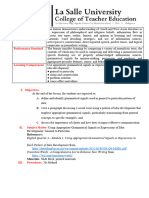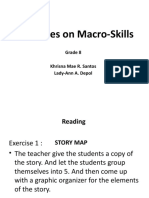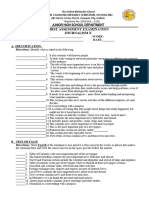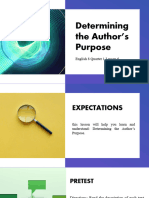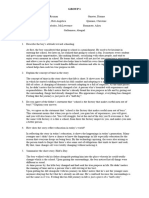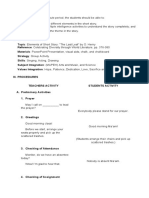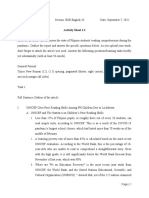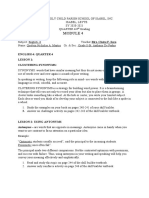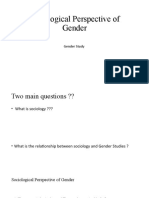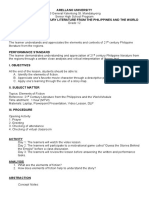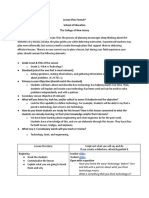0% found this document useful (0 votes)
908 views3 pagesDifferent Types of Text
This document defines and provides examples of different types of texts:
1) Persuasive texts aim to convince the reader to do something through techniques like repetition, capital letters, exclamation points and emotional arguments. Informative texts provide facts to advise or inform readers on a topic. Instructive texts tell readers how to do something using direct language and avoiding unnecessary words.
2) Descriptive texts use adjectives, adverbs, comparisons and senses to help readers visualize what is being described. Narrative texts tell stories through an orientation, complication and resolution, using processes verbs and temporal conjunctions.
3) Expository texts aim to explain or inform on a topic through formats like how-to guides, definitions
Uploaded by
Vivian Rianty AlfinaCopyright
© Attribution Non-Commercial (BY-NC)
We take content rights seriously. If you suspect this is your content, claim it here.
Available Formats
Download as DOCX, PDF, TXT or read online on Scribd
0% found this document useful (0 votes)
908 views3 pagesDifferent Types of Text
This document defines and provides examples of different types of texts:
1) Persuasive texts aim to convince the reader to do something through techniques like repetition, capital letters, exclamation points and emotional arguments. Informative texts provide facts to advise or inform readers on a topic. Instructive texts tell readers how to do something using direct language and avoiding unnecessary words.
2) Descriptive texts use adjectives, adverbs, comparisons and senses to help readers visualize what is being described. Narrative texts tell stories through an orientation, complication and resolution, using processes verbs and temporal conjunctions.
3) Expository texts aim to explain or inform on a topic through formats like how-to guides, definitions
Uploaded by
Vivian Rianty AlfinaCopyright
© Attribution Non-Commercial (BY-NC)
We take content rights seriously. If you suspect this is your content, claim it here.
Available Formats
Download as DOCX, PDF, TXT or read online on Scribd
/ 3
